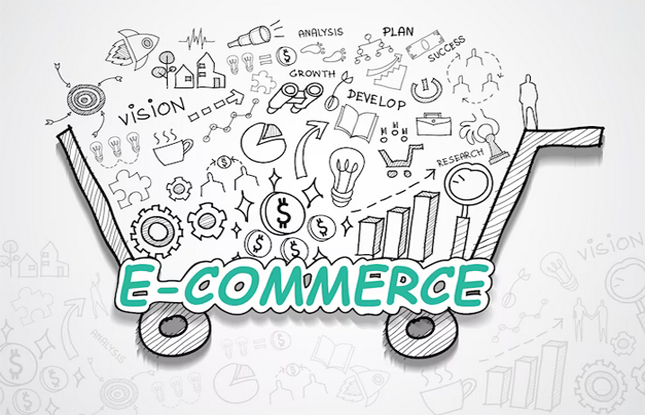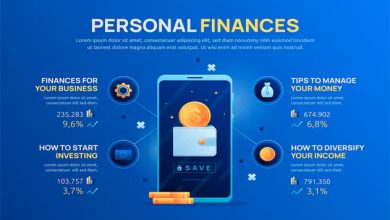
Guide to create an e-commerce App: E-commerce platforms are now a part of our daily lives in today’s growing world. Can you imagine things without using online shopping? E-commerce sales are predicted to grow by $509.4 billion (+54.19%) from 2023 to 2027, as per Statista. Building an e-commerce app requires significant financial investment and effort. Developing this app requires including multiple elements. So, how much will it cost to create your app? Creating an app usually takes 3 to 8 months. The time can vary based on factors like the app’s features and type. This blog will explain how long it takes to create an MVP and a full e-commerce app for your business.
What is An e-Commerce App?
An eCommerce app is a platform where users can browse and buy products from a store using the internet. You can use any device compatible with the app to make purchases. It allows you to buy items from anywhere, as long as you have internet access. The most popular type of these apps is the eCommerce mobile app. It lets buyers use their phones and tablets to buy their desired items easily.
The eCommerce app is not like an online store. It lets the brand customize how customers interact with their products. Online stores typically provide item descriptions and photos. However, eCommerce apps offer additional features like interactive 3D views of products, allowing users to visualize modifications or add-ons and other similar functionalities. eCommerce apps provide many benefits for user interaction and satisfaction. They improve the user experience, encouraging customers to return and make future purchases.
Features of e-Commerce App
When creating the basic features for your app, include the essential elements that users typically expect in these types of apps.
1. Native user experience
Users expect a specific experience on their devices based on their platform. To ensure a seamless user experience, following established conventions for menus, actions, and gestures in interface design is essential. Consistency is critical to avoiding confusion or disconnect for users when interacting with your app. It focuses on seamlessly integrating the app with your phone’s existing features.
2. Item reviews
Customers frequently seek opinions on products before buying them. Including it in the app increases their involvement and gives them the necessary information.
3. Social network integrations
Social networks are more valuable for keeping different age groups engaged with the app. You can also use the feature to promote or share item reviews from those networks.
4. Wishlists
Enabling customers to save items they like is beneficial for several reasons. The main advantage is that you can use the wishlist to provide personalized suggestions to each customer, especially for repeat purchases. Additionally, you can analyze the combined data from all wishlists to promote specific items in your store, ultimately boosting sales.
5. Check out
Implement techniques to make checkouts faster and easier. To make it easier for customers who want to buy from your app, provide features that allow them to save addresses and checkout options. This way, their future purchases will be faster and more convenient.
6. Payment options
To expand on the previous point, you must offer multiple payment options to your customers. The preferences will vary based on the client’s location and age.
7. Push Notifications
This feature helps you share updates about new store items or sales on items your users are interested in. It will encourage your customers to visit the app more often.
Factors Affecting e-Commerce App Development Time
Different factors can influence the time it takes to build an app. Here are the factors and how they can affect the timeline:
1. Complexity of The App’s Features
The app’s complexity depends on two factors:
Core functionalities
The app’s main features are listing products, managing a shopping cart, processing payments, and authenticating users, which are crucial and usually make up the basic framework. The timeline depends on how complex and deep these features are.
Advanced features
Adding advanced features such as personalized recommendations, social sharing, real-time notifications, or integration with external APIs will make the project more complex and take longer to develop.
2. Team Size and Expertise
The size and skill of the development team can significantly affect how long it takes to complete a project. Having a bigger team allows for multitasking and speeds up development. In addition, the team’s expertise in e-commerce app development can help solve challenges more effectively.
3. Design and User Experience (UX) Considerations
Good design and user experience are essential for getting and keeping users. The design’s complexity and attention to detail can affect how long it takes to create a user-friendly experience. If you need a lot of customization and changes, finishing the design and user experience might take longer.
4. Integration of Third-Party Services
Adding third-party services such as payment gateways, shipping providers, or marketing tools may impact the project timeline. API availability, documentation, integration complexity, and customization requirements can increase development time.
5. Development Platform and Technology Stack
The platform and technology you choose for app development can affect how long it takes to complete. Knowing the selected technologies and having access to the right resources can make development faster, but learning new technologies might cause delays.
6. Testing and Quality Assurance
Testing and quality assurance are essential to ensure the app works well and gives users a smooth experience. The complexity of features in an e-commerce app and the depth of testing needed can affect the timeline. Make sure to set aside enough time for testing and fixing bugs.
7. Project Management and Communication
To deliver projects on time, it is essential to have efficient project management, clear communication, and coordination among team members. Planning well, setting achievable goals, and communicating effectively are necessary to make development smoother and avoid delays.
The factors mentioned above have a connection, and the time it takes to develop an e-commerce app will vary based on the requirements, scope, and available resources.
Challenges While Developing an e-Commerce App
When building an e-commerce app, unexpected challenges can occur, like technical issues, compatibility problems, and changing requirements. Challenges can affect development and cause delays.
1. Technical Issues
Creating an e-commerce app requires using advanced technologies, frameworks, and integrations. Technical issues like server crashes, database failures, or security vulnerabilities can happen unexpectedly. These problems can cause downtime, data loss, or compromised user information. They need to be addressed and resolved right away.
2. Compatibility Problems
Developing an e-commerce app for different platforms, devices, and browsers can lead to compatibility issues. It cannot be easy to ensure that all platforms and devices work the same way because they have different specifications and requirements. Compatibility issues can cause problems with how things look, how well they work, or what they can do.
3. Changing Requirements
The client may request changes to the initial requirements as the project progresses. It is because of market trends, user feedback, or business strategy adjustments. Adapting to changing needs can be challenging regarding time, resources, and impact on the app architecture. The development team and stakeholders must communicate and collaborate effectively to manage expectations and prioritize changes.
4. Integration Complexities
E-commerce apps must connect with third-party services and APIs, like payment gateways, shipping providers, and inventory management systems. Integrations can be complicated. They often involve working with various data formats, authentication methods, and version compatibility problems. Integration challenges can cause delays or disruptions in the functionality of the app.
To overcome these challenges, it is essential to have a skilled development team, effective project management, and a flexible development process. Regular testing, continuous integration, and proactive monitoring can help catch and fix problems early. To develop an e-commerce app successfully, it’s essential to do a few things. First, keep up with the latest technologies and best practices. Second, communicate clearly with stakeholders. These steps will help you overcome any unexpected challenges that may arise.
Estimated e-Commerce App Development Time
1. Basic e-Commerce App Development: 3-4+ Months
| Features Included | Time Estimate of Design and UX | Experience (UX) Considerations | Integration of Third-party Services | Development Platform and Technology Stack |
|---|---|---|---|---|
| User registration and authentication | 2-3 weeks | Mobile-friendly design | Payment gateways | Backend: Node.js, Express.js |
| Product listing and search functionality | 2-3 weeks | Intuitive navigation | Inventory management | Frontend: React, Redux |
| Shopping cart and checkout process | 3-4 weeks | Smooth checkout flow | Shipping providers integration | Database: MongoDB |
| Order management and customer support | 2-3 weeks | Order tracking and history | Email notifications | Cloud Storage: Amazon S3 |
| User reviews and ratings | 1-2 weeks | Review moderation | Social media integration | Deployment: AWS, Heroku |
| Admin dashboard and analytics | 2-3 weeks | Sales reports and analytics | CRM integration | APIs: RESTful APIs |
| Responsive design for mobile devices | 1-2 weeks | Mobile app-like experience | Google Analytics | Version Control: Git |
2. Intermediate e-Commerce App Development: 4-8+ Months
| Features Included | Time Estimate of Design and UX | Experience (UX) Considerations | Integration of Third-party Services | Development Platform and Technology Stack |
|---|---|---|---|---|
| User Registration and Authentication | 1-2 weeks | Streamlined user onboarding | Payment gateways | Backend: Node.js, Express.js |
| Product Listing and Search Functionality | 3-4 weeks | Enhanced product filtering | Inventory management | Frontend: React, Redux |
3. Advanced e-Commerce App Development: 8-12+ Months
| Features Included | Time Estimate of Design and UX | Experience (UX) Considerations | Integration of Third-party Services | Development Platform and Technology Stack |
|---|---|---|---|---|
| User Registration and Authentication | 1-2 weeks | Streamlined user onboarding | Payment gateways | Backend: Node.js, Express.js |
| Product Listing and Search Functionality | 3-4 weeks | Enhanced product filtering | Inventory management | Frontend: React, Redux |
| Shopping Cart and Checkout Process | 3-4 weeks | Smooth and intuitive flow | Shipping providers integration | Database: MongoDB |
| Order Management and Customer Support | 2-3 weeks | Order tracking and history | Email notifications | Cloud Storage: Amazon S3 |
| User Reviews and Ratings | 1-2 weeks | Moderated review system | Social media integration | Deployment: AWS, Heroku |
| Admin Dashboard and Analytics | 2-3 weeks | Advanced sales reports | CRM integration | APIs: RESTful APIs |
| Responsive Design for Mobile Devices | 1-2 weeks | Mobile-friendly interface | Google Analytics | Version Control: Git |
| Inventory Management and Product Analytics | 2-3 weeks | Real-time inventory updates | ERP integration | Security: SSL, HTTPS |
| Marketing and Promotional Features | 3-4 weeks | Discount codes, email campaigns | Social media integration | Caching: Redis |
| Customer Loyalty Programs and Rewards | 2-3 weeks | Points system, reward tiers | Loyalty program integration | CDN: Amazon CloudFront |
| Multi-Language and Multi-Currency Support | 3-4 weeks | Language and currency options | Localization and currency APIs | Payment Gateway: Stripe, PayPal |
| Product Recommendations and Personalization | 2-3 weeks | AI-powered recommendation | Recommendation engine integration | Machine Learning: Python, TensorFlow |
| Advanced Search and Filtering Options | 3-4 weeks | Faceted search, advanced filters | Search engine integration | Search Engine: Elasticsearch, Solr |
| Social Media Sharing and Integration | 1-2 weeks | Shareable product links | Social media APIs | Server: NGINX, Apache |
| Push Notifications and Real-Time Updates | 1-2 weeks | Order status updates | Push notification services | Cloud: AWS SNS, Firebase Cloud Messaging |
| Advanced Shipping and Fulfillment Options | 2-3 weeks | Real-time shipping rates | Shipping provider APIs | DevOps: Docker, Kubernetes, Jenkins |
| Affiliate Marketing and Referral Programs | 3-4 weeks | Trackable affiliate links | Affiliate program integration | Payment Gateway: Stripe, PayPal |
| Advanced Reporting and Analytics | 2-3 weeks | Customizable reporting | Analytics integration | Business Intelligence tools |
| Customizable Product Options and Configurators | 3-4 weeks | Configurable product variants | Custom product configurators | Frontend: JavaScript libraries |
| Multi-Vendor Marketplace and Seller Management | 4-6 weeks | Vendor onboarding and management | Vendor integration | Database: PostgreSQL, MySQL |
The time it takes to create an e-commerce platform varies based on the features and type of app you want for your store. We have listed three types of app development options with their features, team expertise, and project-specific factors. Contact a reliable e-commerce development company with skilled developers for a more accurate estimate. They can provide a tailored estimate based on your specific requirements.
Final Words
No matter your business, e-commerce can help you engage with customers and increase sales. The time it takes to develop an app depends on its features, factors, and type. On average, creating an e-commerce app with all the features you need can take several months to a year. It typically takes 3 to 8 months to develop an app.




